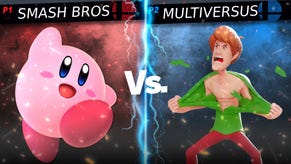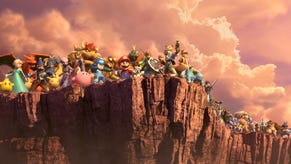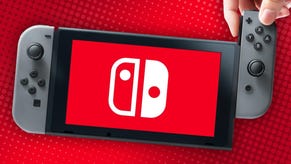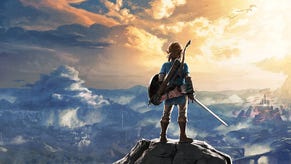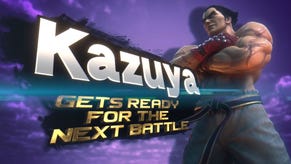How Smash Bros Became One of Nintendo's Most Important Franchises
Why few games can match the hype of a new Smash Bros.
This article first appeared on USgamer, a partner publication of VG247. Some content, such as this article, has been migrated to VG247 for posterity after USgamer's closure - but it has not been edited or further vetted by the VG247 team.
Last week, a crowd of fans gathered at the Nintendo World Store in New York City to watch a new Nintendo Direct. They were hoping for any big announcement, but especially word of a new Super Smash Bros. When the familiar Smash Bros. logo appeared in the eye of the Ink Girl, bedlam ensued.
Smash Bros. has unquestionably become one of Nintendo's most important franchises, occupying the same rarefied air as Pokemon and even Zelda. On the Wii U, the worst selling Nintendo console of all time, it managed to sell more than 5 million copies.
So how did it get to this point? Craftmanship, a bit of unintentional good fortune on the part of its developers, and an incredibly passionate competitive community.
It began with Super Smash Bros. Melee, the follow-up to the moderately popular Super Smash Bros. for the N64. At the time of Melee's release, Smash Bros. was seen as being akin to Mario Tennis—a fun spinoff and not much else. It launched in November 2001, roughly two months after the GameCube, and rapidly became the GameCube's bestselling game.
But despite its success, it was seen as the exemplar of a weak GameCube launch lineup that was unable to compete with the popularity of Halo. In the eyes of the fans and the press, Luigi's Mansion and Smash Bros. Melee were weak stand-ins for Mario 64 and Super Mario World. What they didn't realize was that Melee was about to become one of the most important Nintendo games ever made.

The Rise of the Grassroots Smash Bros Scene
Smash Bros' hook was the natural appeal of pitting Samus against Link, Mario, and Pikachu. HAL Laboratories did an immensely good job of making Smash Bros. Melee a polished tribute to all things Nintendo, which naturally engendered a sense of fond nostalgia among the then-twentysomethings who had grown up with the NES.
Nintendo nostalgia was everywhere in Smash Bros. Melee. Stages like Brinstar Depths, Big Blue, and Onett were wonderfully realized tributes to their original games. The soundtrack contained beautiful new arrangements of classic Nintendo songs. And the characters themselves were extremely faithful to their original counterparts. When you played with Mario, you felt like you were controlling Mario. Unconventional characters like Mewtwo were fun to pick up and try to master. The focus on knocking opponents off the stage made it faithful to Nintendo's platforming roots in a way that would have been difficult, if not impossible, to replicate in a traditional 2D fighting game.
The novelty of Melee allowed it to catch on with a subset of Nintendo fans desperate for a competitive game featuring their favorite characters. The only problem was that Melee wasn't seen as much of a fighting game. So they made it one.
A few years ago, I wrote about the rise of the grassroots Smash Bros. scene here in the U.S. Without a competitive scene to call their own, fans began to build their own through outlets like Smashboard. Pretty soon hundreds of players around the country were piling into rusty vans and heading to pop-up tournaments.
The nostalgia was the hook, but what kept fans coming back was that it was deeper than it looked. The discovery of advanced techniques like wavedashing helped send the competitive community into overdrive as skilled players continually plumbed new depths. Today's top Smash Bros. players can perform feats that would seem impossible to mere mortals. [Update: As someone kindly pointed out, that footage was tool-assisted. Here's a better example.]
By 2003, Smash Bros. Melee was in the Major League Gaming circuit, and even had a legitimate star—Ken Hoang aka "The King of Smash." The establishment of a hardcore competitive base was instrumental in getting Super Smash Bros. to the next level as a series. Even as the GameCube declined and ultimately died out, Melee tournaments remained a fixture. It was one of the factors that help send the hype around Brawl through the roof when it was announced in 2006.
The run-up to Super Smash Bros. Brawl was when "confirmed for Smash" became a borderline meme. We forget it now, but the confirmation of Sonic was a seismic event for fans who came of age during the 16-bit console wars.
IGN wrote at the time, "Nintendo fans have dreamt of pairing the Sonic the Hedgehog against Mario in Smash Bros. long before Brawl was even announced, as petitions and pleas swept across the net during the development of Super Smash Bros. Melee on Nintendo GameCube. Now, years later, Nintendo and SEGA have teamed up to deliver the match of all matches, as Smash Bros. Brawl has a new challenger, and he looks to be ready for the competition."
Sonic was ultimately a disappointingly low-tier character. But it helped to further elevate the profile of Smash Bros., making it the place were fanboy dreams were fulfilled. And it would only get bigger from there, though not before a period of decline that some would later call "The Dark Age of Smash."
The Wilderness Period
Not everyone was excited to see Smash Bros. become a hardcore competitive fighter, of course. Director Masahiro Sakurai was famously at odds with the competitive Smash Bros. community.
Sakurai wrote in a 2003 Famitsu column, "The game I worked on, Smash Bros., is a fighting game, but keeping in mind such reasoning, I set out to make sure the game did not over-emphasize the notions of victory and defeat. I won't go into too much detail, but the game was built so that if a player is strong in combat, just doing the same thing over and over again won't guarantee they'll always win over their opponents. There is a mechanism of accidents occurring, balanced so that the game's progress and results falter easily. Whether you win or lose, you enjoy a hearty laugh, and move on to the next round. I think this makes quite a good game."
Sakurai later reiterated in 2010, "There are three Smash Bros. games out now. But even if I ever had a chance at another one, I doubt we'll ever see one that's as geared toward hardcore gamers as Melee was. Melee fans who played deep into the game without any problems might have trouble understanding this, but Melee was just too difficult."

Sakurai sought to rebalance the scales with Smash Bros. Brawl. Competitive fans immediately noticed that the Brawl was much slower than its predecessor. Not only that, it included a random slipping mechanic that made it difficult to pull off rapid moves. Controversy naturally ensued.
Looking back on the controversy in 2014, Smashboards owner Chris "AlphaZealot" Brown told me, "Even to this day, there is the 'Brawl vs. Melee' debate that will crop up around the internet. When these debates occurred on Smashboards, they often spiraled out of control—things could get ugly. The entire topic was eventually banned as a discussion since no forward progress would be made on either side and it typically resulted in personal insults and negativity within the scene. The Brawl scene, and the Melee scene, essentially developed separately and were always held at different tournaments from 2009 onward—the lone exception being the largest regional and nationals tournaments where all Smash games were welcomed and the community could feel 'one' again."
Brawl's issues sent the series into a period of decline as it struggled to find a competitive home. The series was ostracized by the fighting game community as casual fans slowly dropped away. Melee in particular was beginning to look rather long in the tooth as it continued to carry the banner of the hardcore community.
It wasn't until EVO 2013 that Smash Bros. began to make a comeback. That year, Melee was chosen as the final game in the tournament lineup following a massive charity drive. It proved so popular that it returned for 2014 and 2015.
All the sudden, Smash Bros. Melee was a proper eSport again. And it was about to become more popular than anyone could imagine.
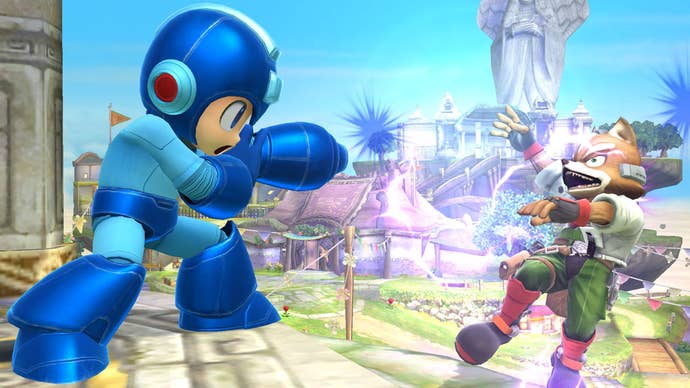
Smash Bros and the Road to Switch
The revitalization of Smash Bros. coincided with a popular entry on the Wii U. While Melee continued to reign supreme with tournament fans, Smash Bros. for the Wii U had much more success than Brawl establishing its own niche. It helped that it had beautiful high-definition graphics, and even better, support for classic GameCube controllers.
The Wii U's struggles were well-documented by the time Smash Bros. launched in 2014, leading to renewed speculation that Nintendo was in trouble. But the Wii U's problems had the paradoxical effect of elevating the profile of every major game that was released for it. Consequently, Smash Bros. for the Wii U was hyped as one of the year's biggest game.
Its popularity was further bolstered by the evolution of social media. When Smash Bros. Brawl came out on the Wii, Myspace was the dominant form of social media, and popular outlets like Reddit and Twitter were in their formative stages, or completely non-existent. Smashboards was the most popular gathering spot for the Smash Bros. community, which served as a natural filter for all but the most dedicated fans.
When Smash Bros. for the Wii U and 3DS came out in 2014, things had changed drastically. Streaming had gained a major foothold, allowing eSports to thrive with a mainstream audience. Reddit and Twitter gave voice to niche gaming subcultures (for better or worse). By 2014, a curious Smash Bros. fan was only a Google search away from learning how to learning how to turn their amiibos into unstoppable killing machines.
Smash Bros. has subsequently found itself perfectly positioned to thrive in a new age of gaming—one where evergreen platforms endure over one-shot experiences like Uncharted. Incredibly, it has become Nintendo's most important eSports title, making it more relevant than ever to a huge proportion of gaming's most coveted demographic. But it's also still a fun party game, ensuring that it will never become too hardcore and inaccessible.
That's what ultimately sets Smash Bros. apart from even the Dota 2's of the world. When the first Smash Bros. character reveals start to hit, it won't just be hardcore fans who are excited. Reveals like Sonic in 2007, and Mega Man in 2013, have become akin to cultural events for gaming. The prospect of pitting Link against the Solaire from Dark Souls is an irresistable prospect for anyone with even a vague appreciation of gaming history. It's the ultimate fantasy matchup.
But its the hardcore competitive fans who laid the groundwork for Smash Bros. to grow and thrive. Nintendo fans help drive the hype, but the community is what allows the series to stay in the public eye long after release.
And what's why we had fans nearly rioting with excitement when Smash Bros. was revealed for the Switch last week. Smash Bros. has evolved into an enduring fan favorite—one that has managed the neat trick of appealing to both casual and hardcore fans. And incredibly, it's all been despite the best efforts of its original creators, who still seem more than a little perplexed by its popularity among the hardcore set.
Many publishers have set out to create popular competitive games that also appeal to casual fans. Most have failed. Nintendo, meanwhile, managed it without even really trying, and now Smash Bros. is one of the most hyped games of 2018. The rest of the industry should be so lucky.





